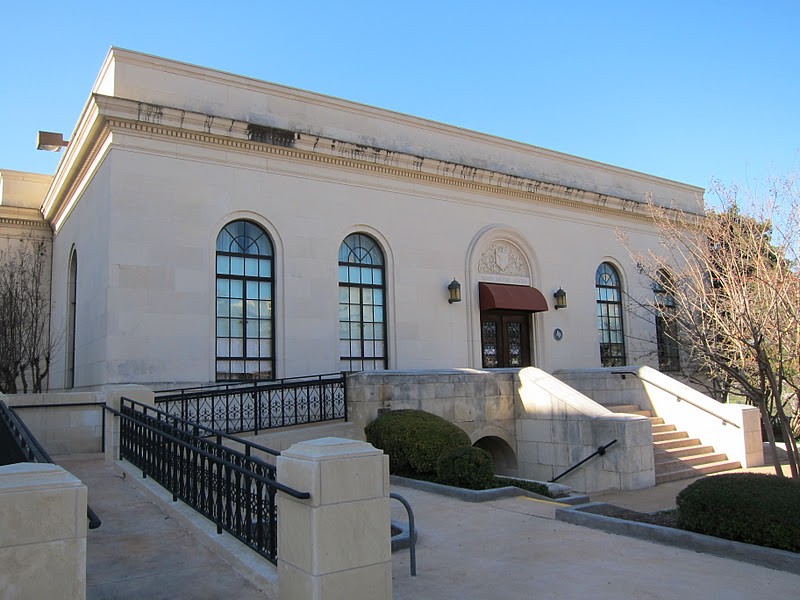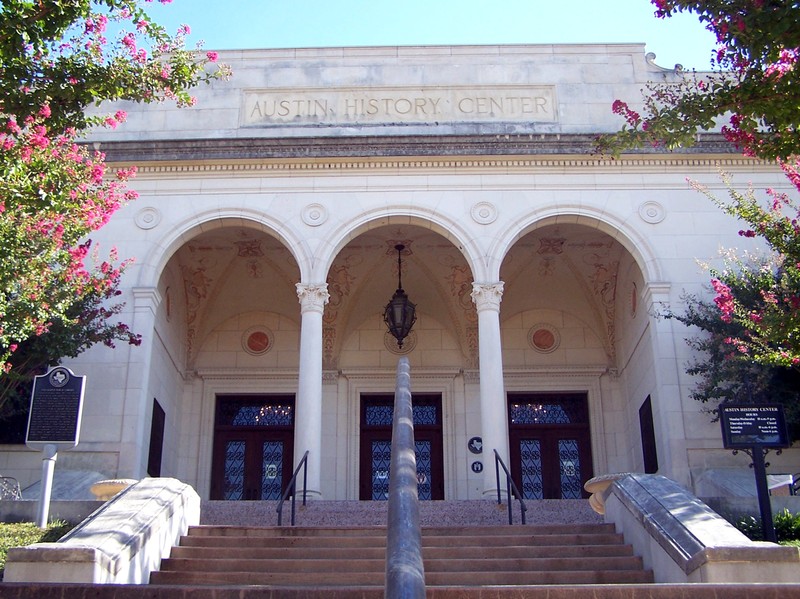Austin History Center
Introduction
Text-to-speech Audio
Images
Austin History Center - The structure was added to the National Register of Historic Places on May 6, 1993.

The Austin History Center. Image by Larry D. Moore. Licensed under CC BY-SA 3.0 via Wikimedia Commons.

Austin History Center street view.

Backstory and Context
Text-to-speech Audio
Originally built for the Austin Public Library in 1933, this Italian Renaissance style building which hosts the Austin History Center today was one of the most architecturally distinctive public libraries constructed in Texas between the First and Second World Wars.
In 1925 the Austin Chapter of the American Association of University Women, under the leadership of Grace Delano Clark, began a campaign to create a public library in the city of Austin, Texas. In the 1932 architect Hugo Franz Kuehneone, one of Austin’s noteworthy architects, was commissioned to design the library. After one year of construction the Library opened on March 10, 1933.
The building served as the main library until 1979, when library functions moved to the John Henry Faulk Library, a newer and far larger facility next door. In 1981 restoration architects Bell, Klein and Hoffman formulated plans to convert the old library into research and archives facilities for the Austin History Center. With its prominent siting, fine architectural detailing, and continued strong role in the cultural life of the community, the Austin Public Library building survives as a significant local landmark until today.



